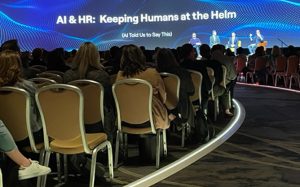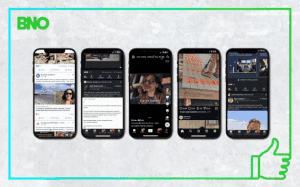Ready to launch a shiny, new global employee value prop as part of talent acquisition?
Ignore diverse global employee priorities at your own peril.
You and your agency have done the heavy lifting to create or update your employer brand and employee value proposition, and you’re starting to pull that EVP into all your materials. Press pause for a moment.
Ideally, your employer brand presents your company in the best possible light to the best possible candidate. But what motivates workers to apply—such as work/life balance or learning and development—and how you prioritize those motivators can be very different depending on where in the world you’re recruiting. We at BNO work with our global brands so that their EVPs have a corporate standard, but we also counsel their TA teams to tailor specific campaigns region by region.
Attracting global talent requires flexibility and data
Management consultants Bain & Company recently conducted a study involving 20,000 global workers, and while some results might confirm previous impressions, others were surprising. In this era where the definition of work itself is shifting due to the pandemic’s upending of long-held norms, understanding what motivates the best candidates to fill your open roles can mean the difference between their clicking your LinkedIn ad or passing it by.
Bain measured 10 different motivators, and while salary and benefits outpaced “interesting work” nearly two to one in the US and Japan, it was almost exactly the opposite in France. “Prestige” ranked a paltry 1% in the US and Indonesia (the world’s fourth-largest labor force, right behind the US), but it was seven times more important to workers in China and India.
Germany, the US, and India ranked high on “job security,” even as the Great Resignation was underway. “Flexibility” outnumbered “learning and growing” everywhere except in India, where learning and growing was twice as important.
Different regions, different motivators
As we read and hear about the changing face of work, it’s easy to get caught up in hearsay and hyperbole. This is where studies like Bain’s and BNO stakeholder interviews can prove priceless. They gather real information on motivation. Aside from the motivators already mentioned, the study, which can be found here, also rates “good relationship with co-workers, “autonomy,” “being helpful to society,” and “a company that inspires me” across 10 of the largest global labor pools.
With the recruitment environment in a hypercompetitive state, especially in tech-heavy industries, we leave no stone unturned when crafting campaigns, sponsored and organic content, and even the job descriptions themselves.
Disparity in motivators, country by country
We recently ran a more early-career-themed campaign for tech workers in Ireland; not just for the immediate open positions, but also longer-term early-career campaigns including a high school target to introduce them to the brand. Younger tech candidates in Ireland naturally had a different focus. So while a personal retirement savings account is included when describing benefits, things like maternity/paternity leave and tuition assistance take center stage.
The flip side of that coin is the talent community in Germany, which skews much older. Are your German recruitment marketing materials geared toward a mature talent community? In Japan, we’ve found that employer alumni networks are incredibly strong and active in the talent marketplace. Do you have a winning alumni strategy in place for your Japanese TA initiatives?
What matters most: salary or interesting work?
Pay was at or near the top in most countries, but in many cases, not by a lot. Increasingly, we’re finding that salary is netting out as a commodity. Competitive salary is a given, and it will not differentiate you, unlike the promise of doing interesting, challenging work or providing work/life flexibility, which can set you apart. And globally, with half of all workers rethinking work/life balance, we’re talking game changers.
Even if your EVP touts ambition, growth, and leadership paths, understanding certain motivators or work philosophies will help formulate how you rank and craft those messages in your hiring campaigns.
Global hiring campaigns are only one of the ways this valuable intel can be used. Not emphasizing tuition assistance or L&D benefits in a culture where they are immensely valued can be a good TA team’s downfall. Not playing up employee resource groups in a country that treasures good co-worker relationships? A CSR program as an afterthought within a country whose leading political party is the Green Party? You get the idea.
Employer branding cannot be successful without a targeted EVP. The key is knowing how to bring that flexibility to fit that EVP intelligently within your varied global markets. Visit our Employer Brand Marketing page and read about BNO’s experience helping global companies like Verizon, Bristol Myers Squibb, and Danaher Corporation successfully activate global EVPs. Then give us a call—we can help.




